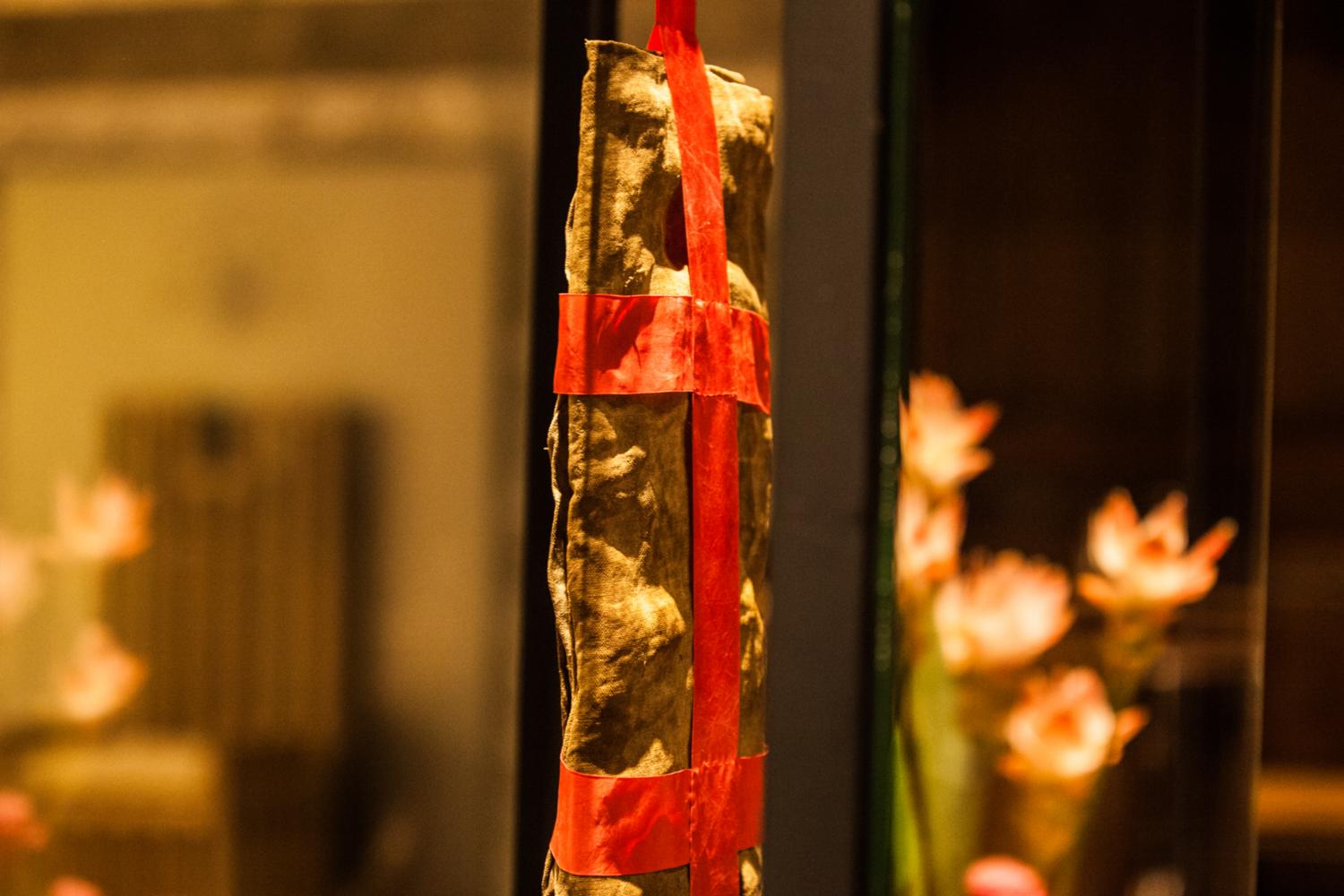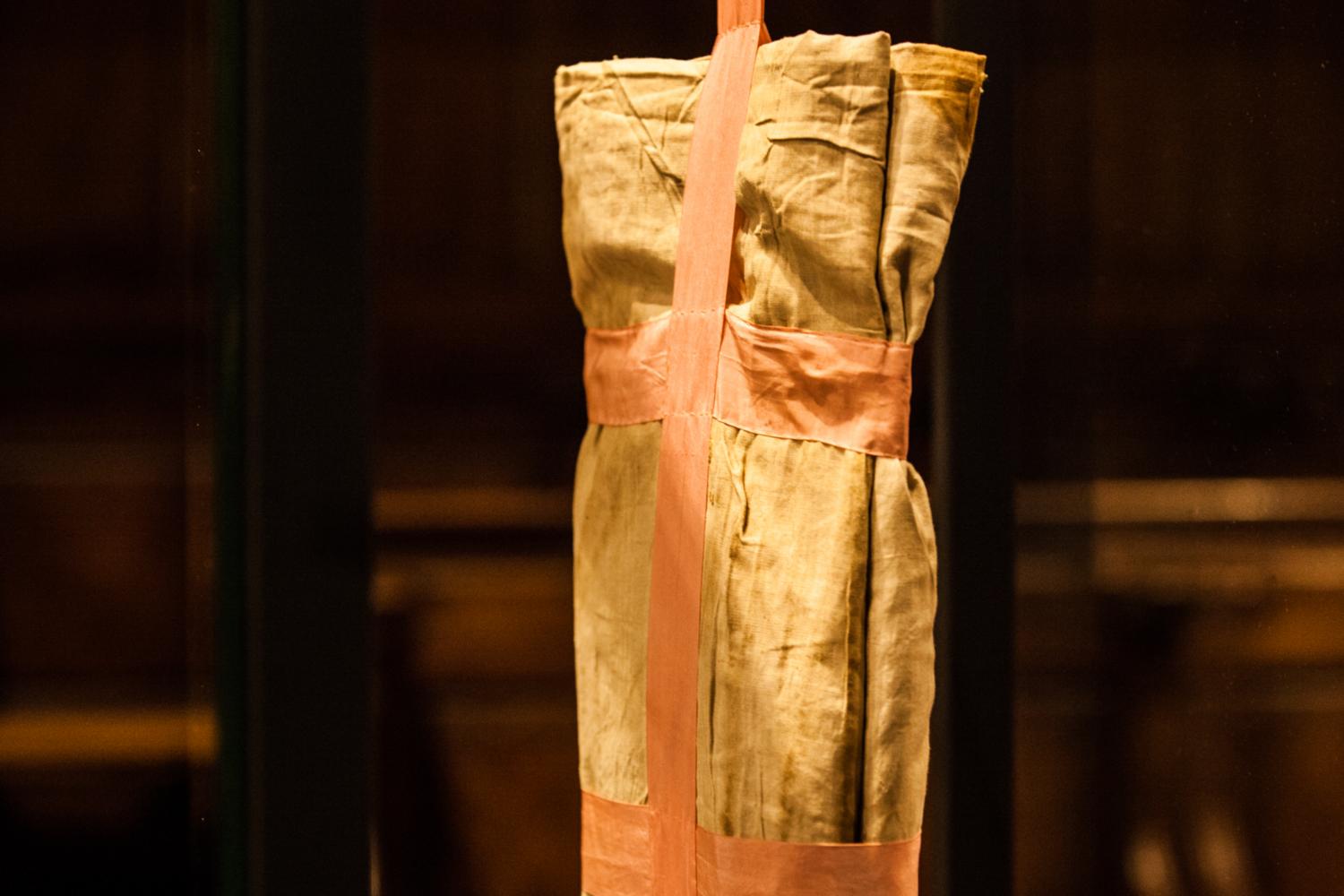The relics
St. Mary's robe
St. Mary's robe is an ancient work of domestic embroidery. It may be assumed that it was used as a slip as the earlier name for the relic, "camisia" - shirt - indicates. It is made of naturally coloured linen and is embroidered with vertical and horizontal lines in a grid pattern. In Israel flax and cotton were only to be found on the coast and in the lowlands of Jordan; woollen fabric was therefore used for everyday purposes. The dress, woven from one piece of cloth with no seams, exhibits a finely sewn neck edging, which is freely shaped. Two perpendicular cuts on the lower sides of the seam are likewise freely embroidered, however in a different form than that of the neck edging. One sleeve of the dress seems previously to have been longer, because something seems to have been cut off the left sleeve. It is the only one of the four relics in Aachen Cathedral to be unfolded for the pilgrimage. The dress is 153 cm long, the seam circumference amounts to 246 cm, the span of the sleeves is 132 cm.
Jesus' swaddling clothes
It is a thick and closely milled, brown material, which almost has the appearance of felt. In the period between pilgrimages it is folded up three times. When unfolded, it has a trapezoid shape. Its upper edge has a semi-circular neck opening. In Aachen, it has been said for a long time that this swaddling cloth of Jesus was made out of St. Joseph's trousers material. The "trousers of St. Joseph" are said to have been sewn together in a kind of "muff" closed on three sides. Precisely this tradition is a sign that the swaddling cloth of Jesus should remind people above all of his poverty. During the pilgrimage, the swaddling clothes remain tied together with a silk ribbon.
St. John the Baptist's beheading cloth
In third place in the order of displaying the relics follows the cloth of the beheading of the holy John the Baptist. It is venerated as a symbol of his loyalty unto death. According to tradition, the head of John the Baptist was hidden in the cloth after he was executed by Herod Antipas. The cloth is a finely woven damask and has the form of a rectangle. The size and refinement of the fabric point to a wealthy owner. It shows large marks (traces of blood) and also exhibits large holes, since parts of this relic were given away to other centres of the Catholic faith. For display and veneration it remains folded up, once along its length and twice along its width and tied with a silk ribbon.
Jesus' loin cloth
The rough, greyish-white fabric of which the loin cloth is made was probably once cut out of a larger garment. It is assumed that this larger garment could have been a tunic. Two clearly recognisable inserts - one of which is completely intact - suggest this. The Aachen relic is a triangle bluntly rounded off at the top. Since its material condition requires sensitive treatment, the loin cloth is also not completely unfolded during the pilgrimage. It is tied together in a cross with a silk ribbon. The question as to whether Jesus wore the loin cloth on the cross has been discussed again and again by theologians. The Biblical story of the Passion mentioned nothing of it, however it reports that the soldiers shared Jesus' clothes among themselves and drew lots for the skirt. And it was both a Roman and Jewish custom to leave a loin cloth to the condemned.



